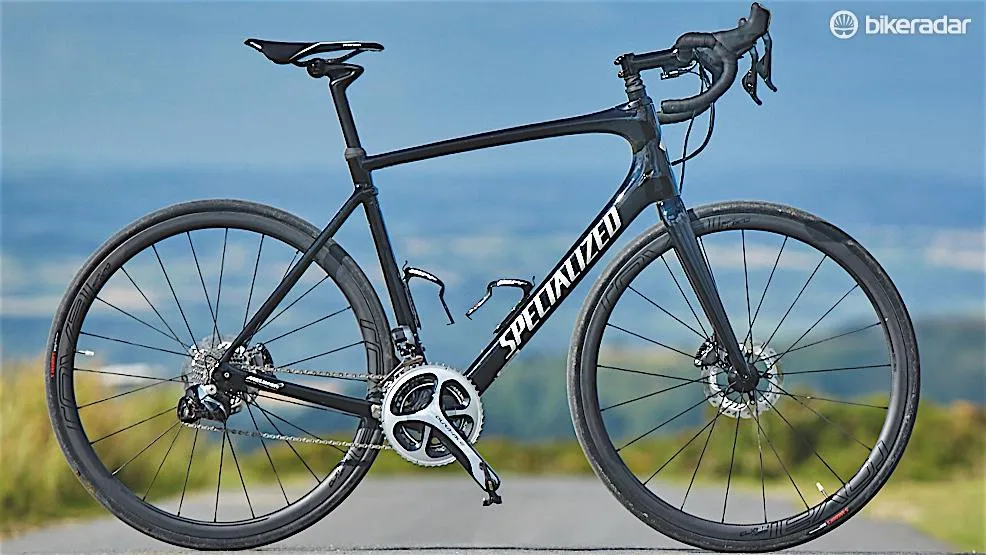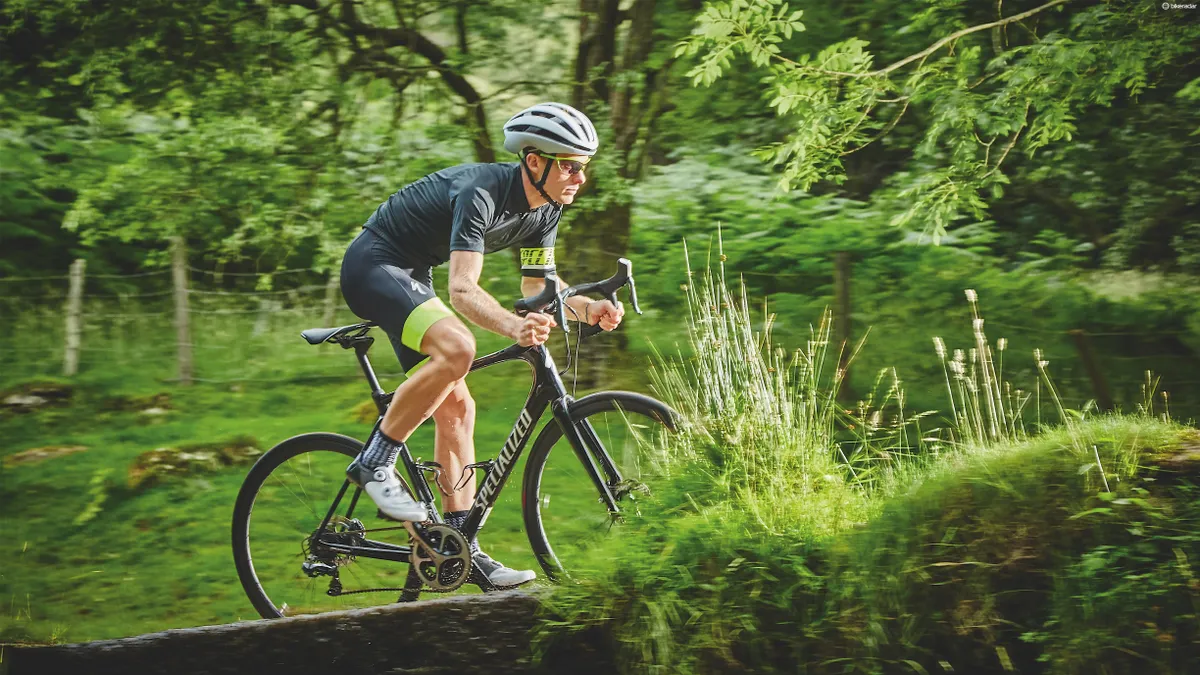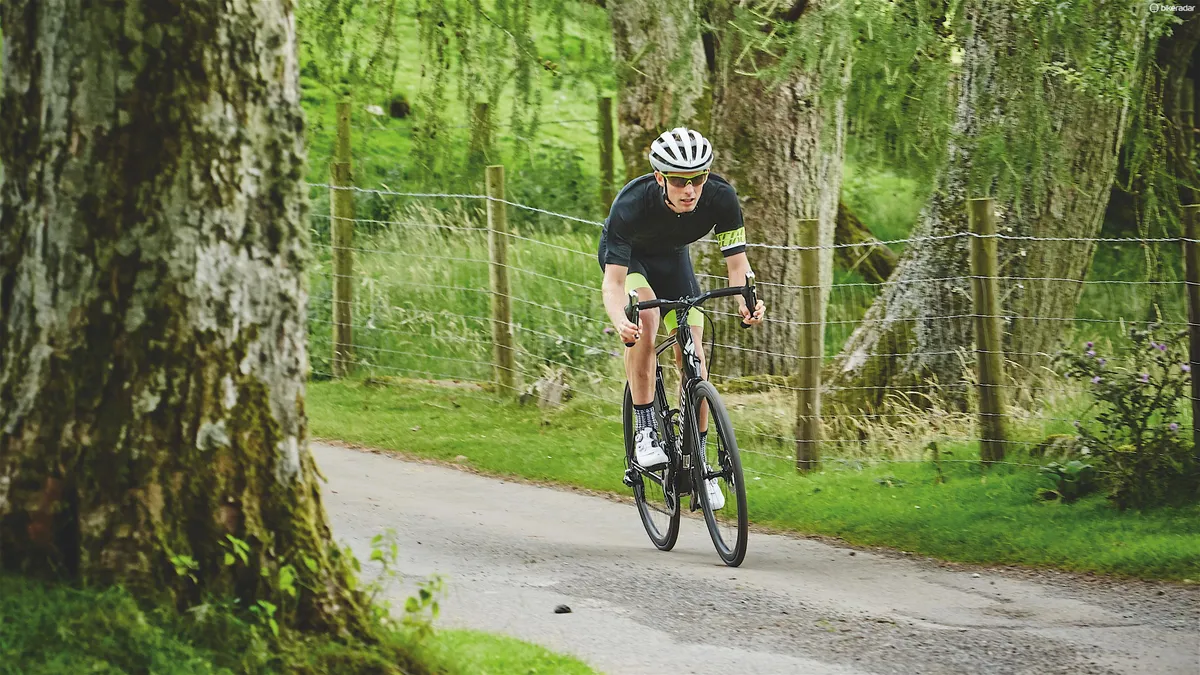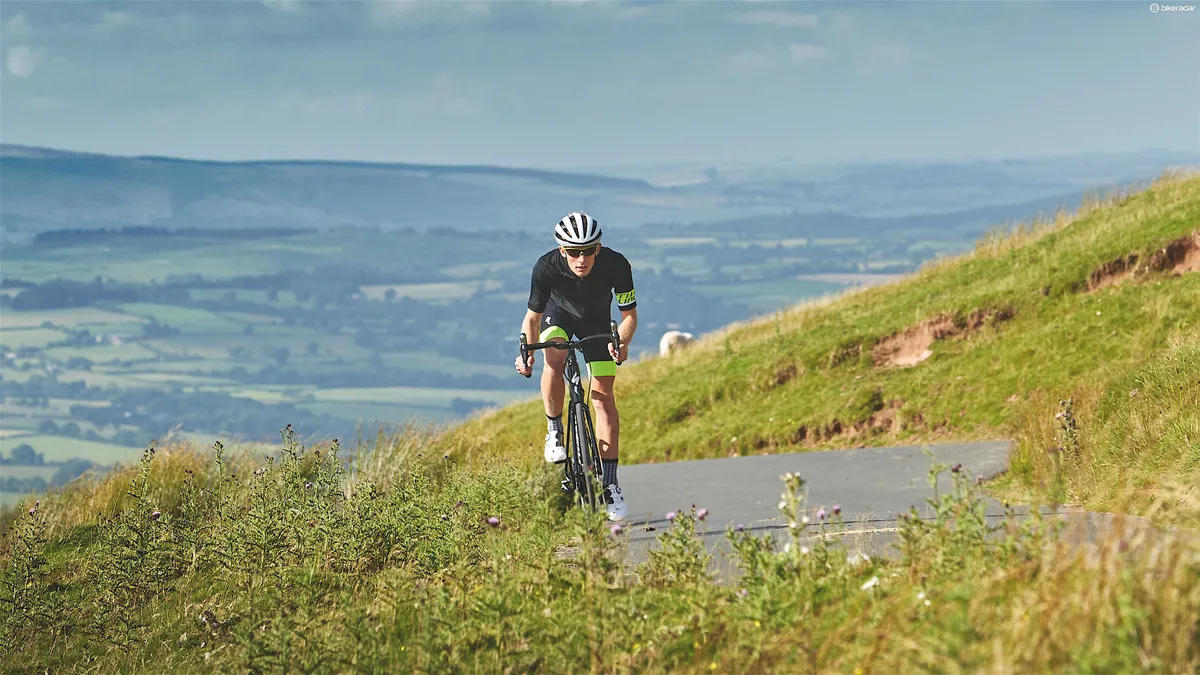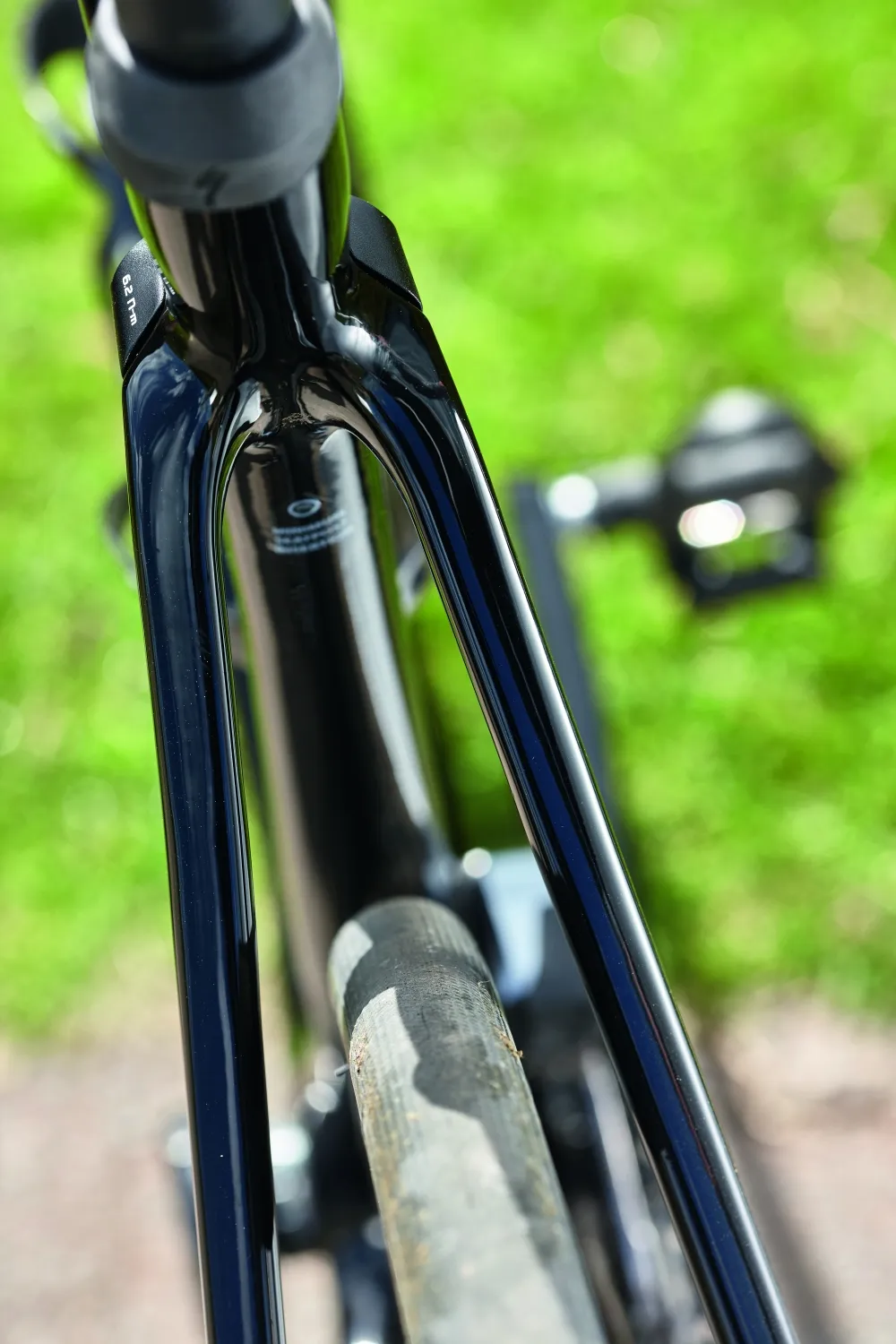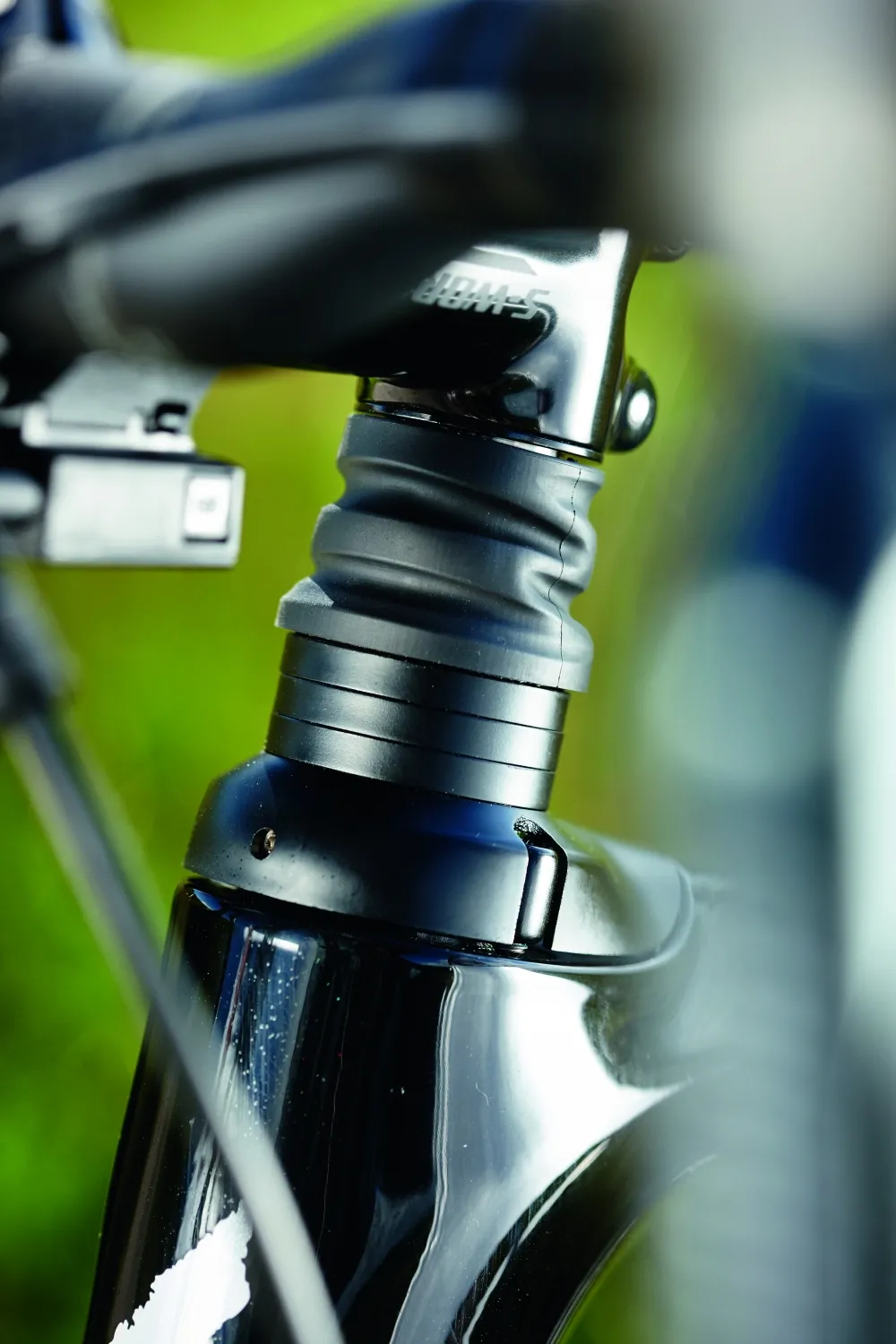The all-new Roubaix is perhaps the most important bike Specialized has launched to date and is one of the most popular sportive bikes worldwide. So we’ve got the exclusive on this radical new departure that could just be the future of endurance road bikes.
- Specialized's Tarmac gets chassis update for 2017
- Specialized Ruby 2017 first ride review
- Tom Boonen's Specialized S-Works Roubaix SL4
Since its launch, back in 2004, the Roubaix has been one of Specialized’s most important bikes. In fact, you could argue that it has been one of the most significant bikes this century, the originator of the whole ‘endurance road bike’ idea that has also given us Trek’s Domane and the Cannondale Synapse, among many, many others.
The Roubaix originally aimed to offer all the benefits of a racing machine, with all the stiffness, low weight and high pedalling efficiency that modern carbon fibre construction could deliver. The big difference was that this was combined with a more endurance-biased geometry.
Specialized Roubaix - Exclusive Review
We’d seen audax-style or in American-speak ‘Century’ bike geometries before, where elongated head-tubes and short top-tubes met shorter angled-up stems for a very upright, more relaxed riding style. But Specialized’s Roubaix wasn’t as short in the top-tube or as tall at the front. It was this sweet spot that revolutionised road bike development.
Over the years technological advances in frame design allowed successive Roubaix bikes to be lighter and more compliant, and frame tubes to be more flexible for a smoother ride. Specialized also introduced its elastomer Zertz insert to help damp vibrations from rough roads. Along the way the Roubaix got a bit more aggressive in its ride position, and with the advent of the SL2 Specialized started winning the race from which the bike took its name — with Tom Boonen victorious on board an S-Works SL2 in 2008, and Fabian Cancellera first over the line in 2010.
The last of the previous generation, the SL3, took the Roubaix to another level again. By changing the construction method and making the frame out of four separate parts Specialized was able to manufacture a bottom bracket shell that included the chainstays and short lugs that attached to both the seat-tube and down-tube. That gave the Roubaix class-leading stiffness under pedalling that had only previously been found on the Tarmac.
The company used its ‘Cobra’ design head-tube, where extending fibres from the top- and down-tube wrap fully around it like a lasso, massively increasing front-end stiffness.
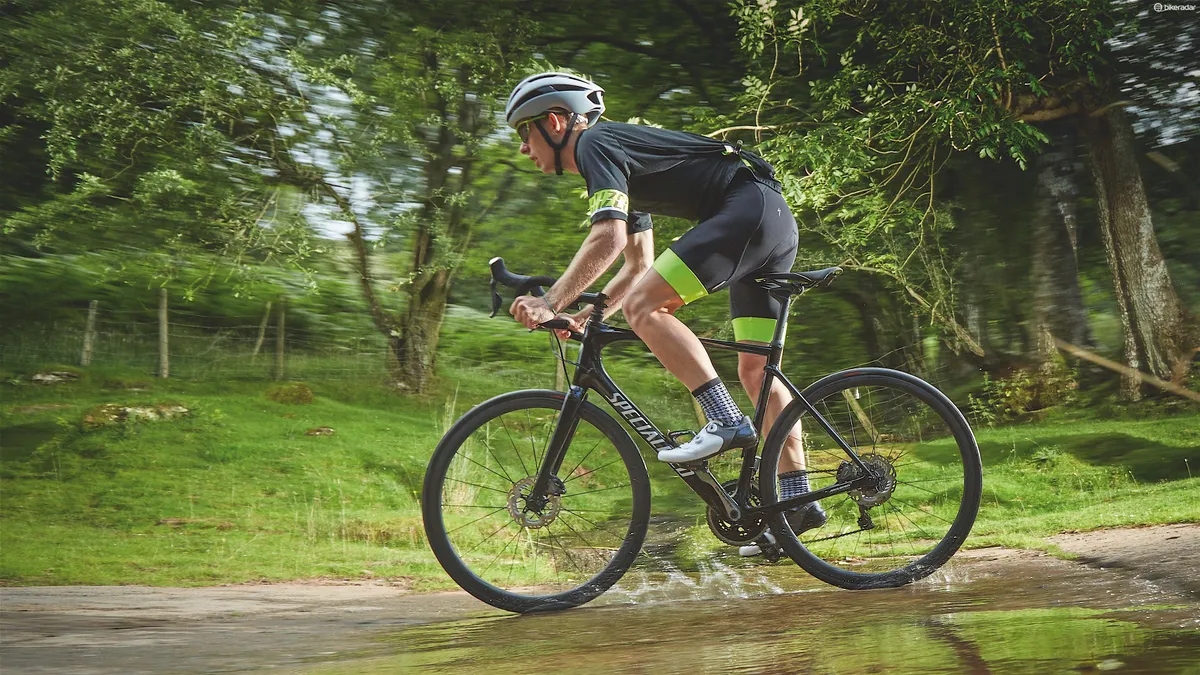
Coming of age
The new Roubaix takes plenty of the construction lessons learned from the past; perhaps the biggest shock with the new bike is the lack of Zertz. The elastomer inserts that defined the Roubaix are no more, replaced by a mix of clever carbon construction and an innovative piece of front-end suspension.
Specialized’s design team, led by engineer Chris D’Aluisio and head of applied technologies Chris Yu, set out to discover whether ‘smoother equals faster’, knowing that one of the major selling points of the Roubaix has always been ride comfort.
Months of data capture followed using technical partner McLaren’s data logging equipment. “From the data we gathered,” Chris Yu tells us, “McLaren has developed, with our input, a piece of software called the Rolling Efficiency Simulator. Our engineers and designers have used it to design our bikes to meet the needs of any road surface.”
Chris D’Aluisio continues: “As we were gathering the data, taking the bike and rider as one system, we started to see that a benefit of compliance was also traction. If you can keep in contact with the ground more of the time then you’ll have more control and be able to go faster. A McLaren F1 car has suspension but it’s about traction, not comfort.”
The Specialized team knew early on they’d need some form of suspension, and Chris set about building and testing radical prototypes including a linkage fork, and even a mountain bike-like pivot rear end using a version of the Brain system found on its cross-country bikes.
“We knew that we’d need something at both ends. Like everyone else, we had been concentrating on the back end, which seems crazy when you think about it. You wouldn’t ride a mountain bike with a rigid fork and suspension on the back,” says D’Aluisio.

Up front and personal
There are two distinct types of front suspension. Splay relies on the fork being able to move fore-and-aft, and axial where the fork moves vertically up and down below the head-tube. For all-out efficiency, neither is perfect. Splay can slow you down, and the traditional ‘axial’ mountain bike-like bob when climbing wouldn’t work here either.
On the Roubaix the effective suspension position was on top of the head-tube to reduce any bobbing effect and suspend the rider, not the bike. The included cartridge, which contains three separate springs running on needle roller bearings, does add weight but the bike isn’t exactly heavy.
The frame, without suspension, weighs around 700g, and the fork 300g, add in 200g for the cartridge and it’s still a light chassis. Our complete test bike tips the scales at a shade over 7.2kg (58cm), which isn’t bad for a disc-equipped road bike.
The ride
We’ve ridden our Project prototype Roubaix over the cobbles of Belgium and Northern France and extensively back in the UK. You might think the suspension cartridge thing sounds like a gimmick (we certainly did), but on the highly contrasting surfaces of Belgium and France going from smooth tarmac to sharp-edged and rocky pavé the Roubaix impresses.
We’ve ridden demanding sections like the legendary Carrefour de l’Arbre head down and with gritted teeth, simply trying to hold onto our pace and turn the pedals while being hammered into submission. We’ve let the bike track where it wants to rather than steering it where we want it to go.
The new Roubaix makes things easier — easier to maintain speed, pick a line, make choices, find better lines and even attack and pass those riding around you. We didn’t even need to let out any pressure from the tyres before hitting the cobbles; the chassis could handle the vibrations and bumps without any extra help.
The front end is astonishingly capable and the neat back-end’s design, which drops the seatstays 3.5in below the top-tube junction and incorporates the seat clamp into the seatstays ends via twin bolts, allows for much more movement from the seatpost.
A rubber seal covers the top of the seat-tube, and the tube is significantly bigger than the slender post to allow for plenty of room to move. With the elastomer-infused CG-R head to the seatpost too, you’ve got a back end that balances out and complements the front.
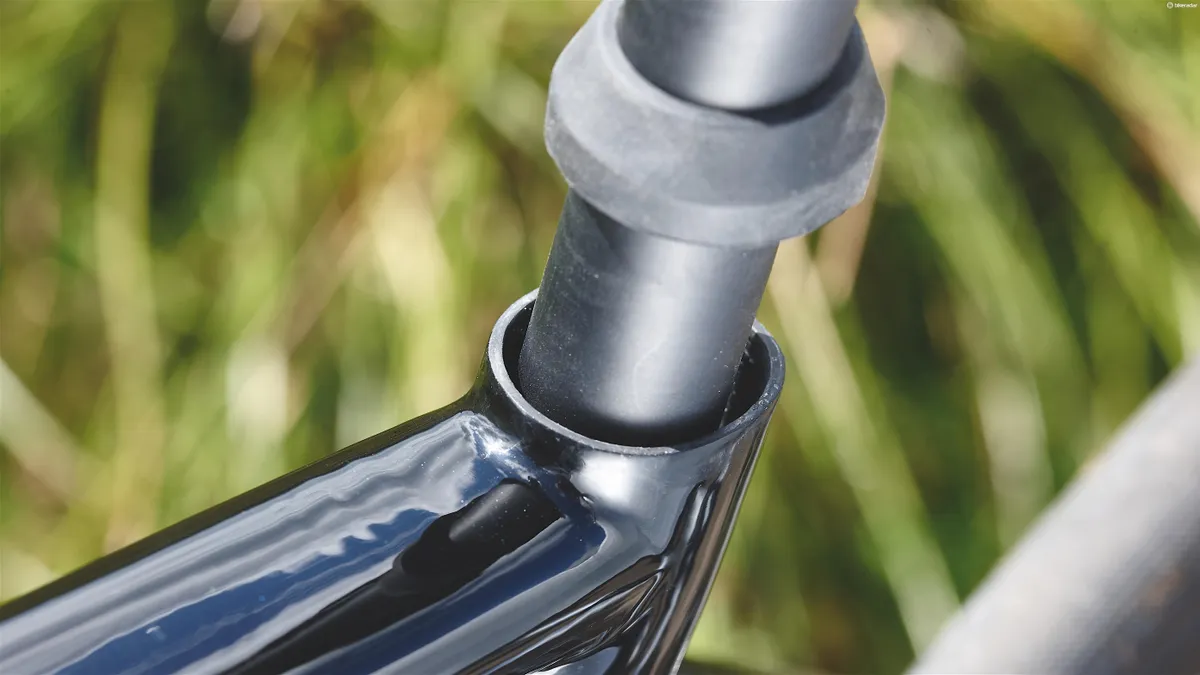
Back on UK tarmac, the Roubaix is perhaps even more impressive. The bike just feels smooth — on normal roads it simply floats along, yet still with plenty of speed.
The previous SL4 had a stack [vertical distance between the bottom bracket and middle of the head-tube] of 622mm and a reach [horizontal distance between the bottom bracket and middle of the head-tube] of 392mm (58cm frame) defined by the 225mm-long head-tube.
Through high-speed corners the bike feels superbly balanced and the bonus of excellent braking makes the Roubaix our new favourite companion for descending duties
The new Roubaix’s numbers take around 30mm of stack out, add 10mm to the reach and have shortened the head-tube to 190mm. The wheelbase is over 10mm shorter thanks to shorter chainstays, so the new bike has more in common with the pro-racing Tarmac than anything else in Specialized’s range.
If you’re a fan of the previous shape, Specialized’s fitting will allow you to change the top cover of the head-tube for a deeper 28mm version and choose a bar with more uplift from the three (flat, mid and high) available S-Works Hoverbar shapes. For our tester the low cap, mid-rise bar provided a position equal to his own bike.
When climbing, the Roubaix feels as balanced and capable as the Tarmac, helped in no doubt by the latest Roval wheels. The CLX32s have a new rim with a 21mm internal width, are tubeless-ready and use a plug system to save 20g over traditional tubeless rim strips.
The aero disc hubs are the same as Roval uses in its CLX64s, with DT providing its Aerolite spokes. It’s a light wheelset (1,340g), and one Spesh claims is aero too — some eight seconds faster than the CLX40 over 40km.
The 26mm tyres are supple and sticky, and the widened shape from the wide rims makes for a big contact patch for plenty of control on the limit. If you get out of the saddle you can and will induce a little bit of bob, but as it’s happening above the bike (only your arms move) it doesn’t affect power delivery.
The Roubaix really shines when the road turns downwards. All that comfort-boosting suspension and back-end compliance means control. You can hammer this Specialized as fast as you like with no concern for scarred surfaces, potholes, ruts and heavy gravelled surfaces. The chassis just sits in and maintains contact, where a less compliant bike would skip or bounce.
Through high-speed corners the bike feels superbly balanced and the bonus of excellent braking makes the Roubaix our new favourite companion for descending duties.

All roads
The Roubaix is still firmly a road-biased bike, but we’re sure Specialized will rollout the technology to a wider variety of machines. The ingenious cartridge suspension would be a benefit to cyclocross riders and gravel grinders.
As it stands the new Roubaix is a five-star machine without a shadow of a doubt
Most road bikes will take a diversion off the beaten path now and again, but you need to be careful and slow down a touch. By contrast, on the Roubaix you can go full gas, just as you would on the smoothest black top. The front end can be tuned to your terrain or personal preference using three interchangeable springs — long, medium, and short. Shorter offers more compliance, and the longer is stiffer.
It’s a fairly quick change (about 20 minutes) so if you know you’re in for a particularly bumpy day out you can prepare or experiment to find your preferred ‘feel’. Specialized puts service intervals on the cartridge at around 18 months, but with the cartridge being well sealed and hidden under a rubber seal the chance of contamination is low.
By approaching comfort from the angles of ride quality and control, Specialized has changed the game, just as it did a decade or so ago with the first Roubaix. The new iteration is perhaps the most impressive endurance bike yet.
It’s a world apart from the original; more aggressive and nimble and it has a level of road holding that’s simply astonishing. If you still want the more upright riding position of the previous SL4 you can achieve that through the available fitting options, while still retaining the ability to go more aggressive later on.
It’s hard to apply a scoring verdict to our test bike as it isn’t a full production model — we have S-Works specification on a Pro-level (one below S-Works) chassis. The version you’ll be able to buy with a similar spec will be lighter, which should make it even more impressive.
As it stands the new Roubaix is a five-star machine without a shadow of a doubt. It won’t necessarily make you a better rider, but it will make every ride better
Specialized Roubaix pricing
- S-Works Roubaix eTap — £7,500 / US$10,000 / AU$11,500
- Roubaix Pro UDi2 — £5,500 / US$6,500 / AU$TBC
- Roubaix Expert UDi2 — £3,800 / US$4,600 / AU$6,600
- Roubaix Expert — £3,200 / US$4,000 / AU$5,300
- S-Works Roubaix F/Set — £2,750 / US$4,000 / AU$4,500
- Roubaix Comp — £2,400 / US$3,200 / AU$4,100
- Roubaix Elite — £1,900 / US$2,600 / AU$3,300
